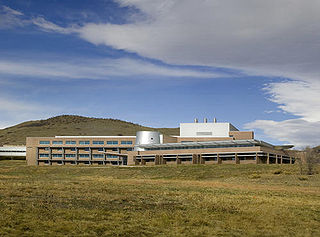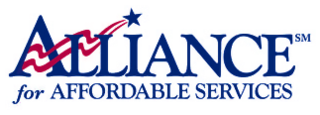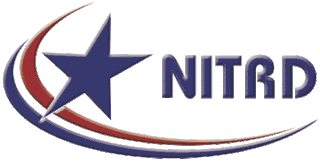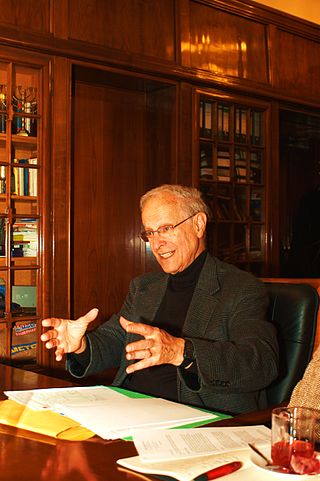
The National Institutes of Health, commonly referred to as NIH, is the primary agency of the United States government responsible for biomedical and public health research. It was founded in the late 1880s and is now part of the United States Department of Health and Human Services. Many NIH facilities are located in Bethesda, Maryland, and other nearby suburbs of the Washington metropolitan area, with other primary facilities in the Research Triangle Park in North Carolina and smaller satellite facilities located around the United States. The NIH conducts its own scientific research through the NIH Intramural Research Program (IRP) and provides major biomedical research funding to non-NIH research facilities through its Extramural Research Program.

The United States Department of Energy (DOE) is an executive department of the U.S. federal government that oversees U.S. national energy policy and manages the research and development of nuclear power and nuclear weapons in the United States. The DOE oversees the U.S. nuclear weapons program, nuclear reactor production for the United States Navy, energy-related research, and domestic energy production and energy conservation.
As a federal agency, the National Aeronautics and Space Administration (NASA) receives its funding from the annual federal budget passed by the United States Congress. The following charts detail the amount of federal funding allotted to NASA each year over its history to pursue programs in aeronautics research, robotic spaceflight, technology development, and human space exploration programs.

The National Medal of Technology and Innovation is an honor granted by the President of the United States to American inventors and innovators who have made significant contributions to the development of new and important technology. The award may be granted to a specific person, to a group of people or to an entire organization or corporation. It is the highest honor the United States can confer to a US citizen for achievements related to technological progress.

The National Renewable Energy Laboratory (NREL) in the US specializes in the research and development of renewable energy, energy efficiency, energy systems integration, and sustainable transportation. NREL is a federally funded research and development center sponsored by the Department of Energy and operated by the Alliance for Sustainable Energy, a joint venture between MRIGlobal and Battelle. Located in Golden, Colorado, NREL is home to the National Center for Photovoltaics, the National Bioenergy Center, and the National Wind Technology Center.
The Small Business Innovation Research program is a U.S. government funding program, coordinated by the Small Business Administration, intended to help certain small businesses conduct research and development (R&D). Funding takes the form of contracts or grants. The recipient projects must have the potential for commercialization and must meet specific U.S. government R&D needs.
The Advanced General Aviation Transport Experiments (AGATE) project was a consortium of NASA, the FAA, the general aviation industry and a number of universities. Its goal was to create a Small Aviation Transportation System (SATS) as an alternative to short-range automotive trips for both private and business transportation needs. The Small Aviation Transportation System will make many time-sensitive short-haul trips more affordable for business, medical, public safety and recreational pursuits.
In the United States, a cooperative research and development agreement is an agreement between a government agency and another government agency, a private company, non-profit, or university to work together on research and development.

The Tibbetts Award ("Tibbie") is a national award made annually to those small firms, projects, organizations, and individuals judged to exemplify the very best in Small Business Innovation Research (SBIR) achievement. The award was established in 1995 and the first awards were made in 1996. The award was named after Roland Tibbetts of the National Science Foundation.
The Federal Laboratory Consortium for Technology Transfer (FLC) is a U.S.-based nationwide network of federal laboratories that provides a forum to develop strategies and opportunities to help transfer laboratory mission technologies into commercial products for the global marketplace.
The America Creating Opportunities to Meaningfully Promote Excellence in Technology, Education, and Science Act of 2007, or America COMPETES Act, was authored by Bart Gordon, and became law on August 9, 2007, when it was signed by President George W. Bush. This was an act "[t]o invest in innovation through research and development, and to improve the competitiveness of the United States".
The Utah Science Technology and Research Initiative (USTAR) is a technology-based economic development agency funded by the state of Utah. The organization works to develop ideas and research into marketable products and successful companies through its competitive grant and entrepreneur support programs. USTAR facilitates the diversification of the state’s tech economy, increases private follow-on investment, and supports the creation of technology-based start-up firms, higher paying jobs and additional business activity leading to a statewide expansion of Utah’s tax base.

Alliance for Affordable Services, founded in 1981, is a national organization which uses group buying power to negotiate discounts on personal, professional and health care benefits and services for tens of thousands of members in the United States. Before 2010 it was controlled by HealthMarkets.

The Networking and Information Technology Research and Development (NITRD) program consists of a group of U.S. federal agencies to research and develop information technology (IT) capabilities to empower Federal missions; support U.S. science, engineering, and technology leadership; and bolster U.S. economic competitiveness.

The Stevenson–Wydler Technology Innovation Act of 1980 was the first major U.S. technology transfer law. It required federal laboratories to actively participate in and budget for technology transfer activities.
The Office of Research and Technology Applications (ORTA) is an organizational structure established in United States federal laboratories through the Stevenson-Wydler Technology Innovation Act of 1980, specified in 15 USC § 3710. The acronym "ORTA" has evolved to refer to those who perform the functions of the ORTA organization. By law, the ORTA must be staffed by at least one full-time person in any laboratory with 200 or more scientific, engineering, or related technical positions, in order to coordinate and promote technology transfer.
Executive Order 12999 is a United States Presidential Executive Order signed on April 17, 1996, by President Bill Clinton which permits U.S. federal agencies to transfer excess computers and related peripherals to educational and nonprofit 501(c)(3) organizations.

Arthur S. Obermayer was an American chemist, entrepreneur and philanthropist. He was the founder and president of the Moleculon Research Corporation. He was a co-founder of Partners for Progressive Israel and the Obermayer German Jewish History Awards.

The National Center for Science and Engineering Statistics (NCSES) is one of the thirteen principal statistical agencies of the United States and is tasked with providing objective data on the status of the science and engineering enterprise in the U.S. and other countries. NCSES sponsors or co-sponsors data collection on 15 surveys and produces two key publications: Science and Engineering Indicators, and Women, Minorities, and Persons with Disabilities in Science and Engineering. Though policy-neutral, the data and reports produced by NCSES are used by policymakers when making policy decisions regarding STEM education and research funding in the U.S.










